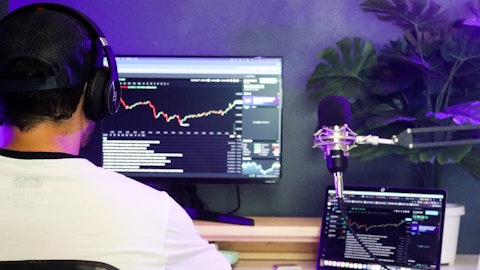William Grippin: Got it. Perfect. And then…
Bill Siwek: Does that answer your question?
William Grippin: Yes, yes, you got it. You got it. Yes. And just thinking a little longer term, three plus years out here as the wind market hopefully continues to recover and stabilize, how are you thinking about potentially adding lines beyond the $37 million at that point? Are you comfortable with kind of the footprint you have in place? Or would you expand more if you think the demand is there and sustainable?
Bill Siwek: Yes. Yes, clearly, if the demand – if we see the demand there, and it is sustainable, and we have commitments from our customers that in certain regions, we certainly will look at opportunities. We’re looking at them today. These – if it’s a greenfield, it takes a long time to get there. So looking at markets and geographies where demand – we think demand will be for quite some time, we’re evaluating that today. So the answer is yes. We will certainly consider that. Are we comfortable with our footprint today? Absolutely. I think we have a great footprint and we do have capacity to fill. So I think just by filling our capacity today, we get north of $2 billion of revenue, filling our capacity and running that at a fairly modest utilization rate, 90s, mid-90s and gets us to those EBITDA numbers that we’ve talked about.
So I think we’re in a good position today. But if the opportunity presents itself, we can certainly look at additional growth opportunities beyond our existing footprint.
William Grippin: Appreciate it. Thanks, Bill.
Bill Siwek: Yes. You bet. Thanks Will.
Operator: The next question is from Jeffrey Osborne with TD Cowen. Please go ahead.
Jeffrey Osborne: Hey Bill, three quick ones. On the EV side, I think you had previously talked about year-end having some clarity on that. I think the 10-K makes reference to June. Is the sort of anti-EV marketplace delaying that? Or is there just a slower process than anticipated?
Bill Siwek: I would say it’s more a little bit slower process than anticipated. But still, we’re moving forward, a lot of interest, and we do believe we’ll have something done here shortly.
Jeffrey Osborne: Got it. Good to hear. And then on the supplier issue, it looks like the decremental margins were around 35%, just eight divided by 23. What are the – a, why is that? Is it just you had to pay people to stand around from a labor perspective, I assume in Mexico for four weeks to do nothing? Or – can you just walk us through that? And then when you are going after damages, is it for the full value of the product loss or the full loss income or EBITDA to the company?
Bill Siwek: Yes. So the – I mean, you’re basically losing contribution margin, right? So it is – we do have people that are – I wouldn’t say they were doing nothing, but they are not nearly as productive as they would be if they’re building blades. So yes, you’re basically stopped and you can’t just send them home. You’ve got to keep that workforce intact. So it’s that, it’s additional cost to deal with – to deal with the speed up then of the production once you do restart. Damages, I don’t want to talk about that publicly, but our contracts provide for that, and so we’ll follow our contract.
Jeffrey Osborne: Got it. And the last question I had is, is there any update on what the plan is for Newton? And is that – I assume that’s not in 2024 guidance? And perhaps if it’s like repowering for GE. Is that something that could be started fairly quickly versus a newer blade model that maybe you haven’t produced in the past?
Bill Siwek: Yes. Yes. So you’re right, it’s not in 2024 guidance. And to your point, to the extent we were to be asked to start with the existing blade that the plant is tooled for, we could start up fairly quickly. It would just be a matter of assembling the workforce. So that would be relatively quickly. But yes, it is not in the 2024 guidance at this point.
Jeffrey Osborne: And the rationale there is that because they need clarity on IRA or is there some other market driver on why you don’t have clarity on that facility?
Bill Siwek: Yes, that’s, it’s more clarity for GE and what they want to use the plant for at this point.
Jeffrey Osborne: Got it. Thank you. That’s all I had.
Bill Siwek: Thanks, Jeff.
Operator: This concludes our question-and-answer session. I would like to turn the conference back over to Bill Siwek for any closing remarks.
Bill Siwek: Thank you again for your time today and continued interest and support in TPI. We’ll talk next quarter. Thank you.
Operator: The conference has now concluded. Thank you for attending today’s presentation. You may now disconnect.
Follow Tpi Composites Inc (NASDAQ:TPICQ)
Follow Tpi Composites Inc (NASDAQ:TPICQ)
Receive real-time insider trading and news alerts


